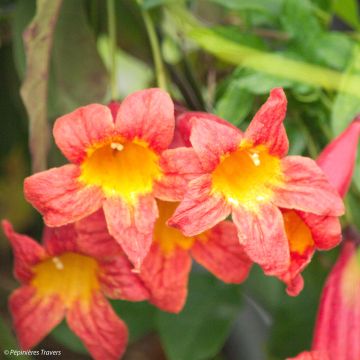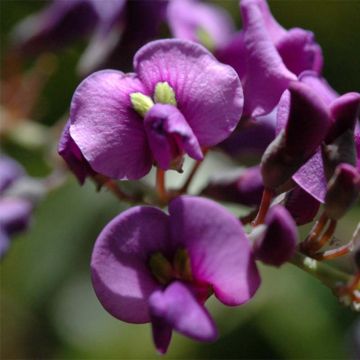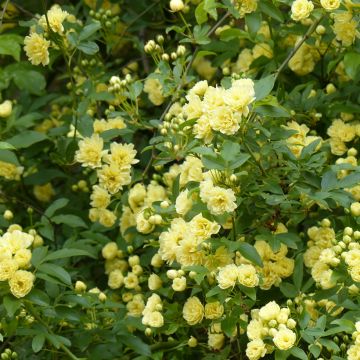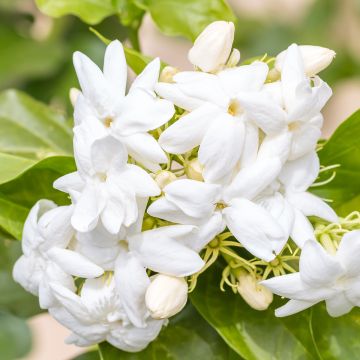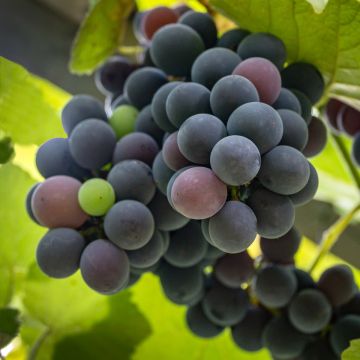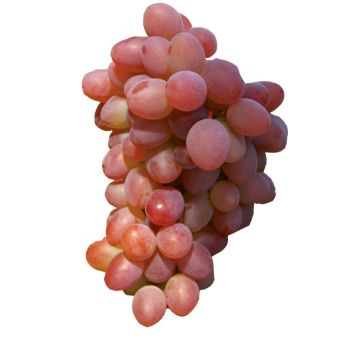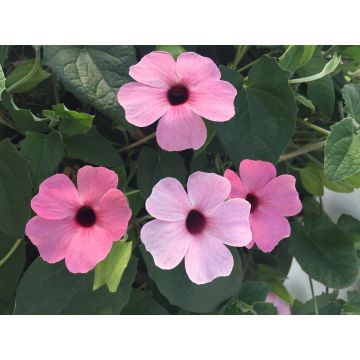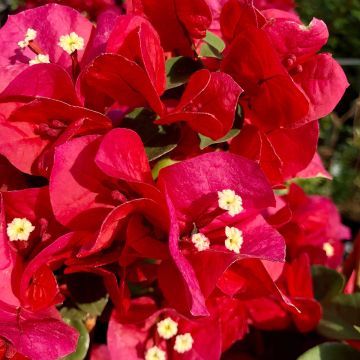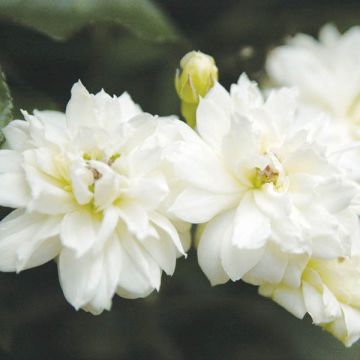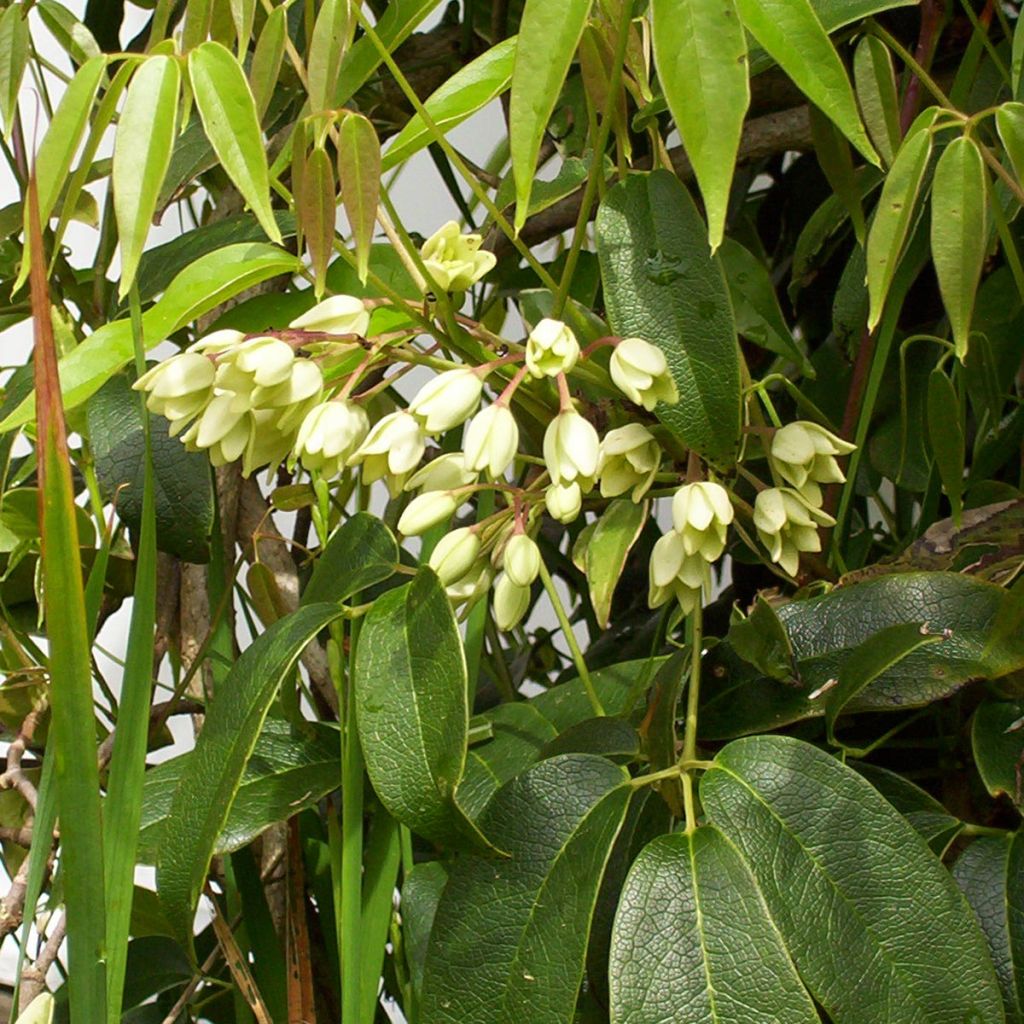

Holboellia coriacea - Sausage Vine
Holboellia coriacea - Sausage Vine
Holboellia coriacea
Sausage Vine
The delivery was in very good condition. It's been planted along the wall. However, I have a golden elm from last year that looks unwell. What can I do?
Evelyne , 08/04/2024
This plant carries a 6 months recovery warranty
More information
We guarantee the quality of our plants for a full growing cycle, and will replace at our expense any plant that fails to recover under normal climatic and planting conditions.

Does this plant fit my garden?
Set up your Plantfit profile →
Description
Holboellia coriacea, also called the Sausage Vine, is a vigorous climbing plant that is not well known, but has great decorative value, resembling its cousins Akebia and Stauntonia. This climbing plant is characterised by its evergreen foliage and fairly discreet but deliciously fragrant spring flowering, with male and female flowers that look different. The small female flowers, whitish-green, emerge at the base of new shoots, while the male flowers, more mauve, appear at the tips of climbing branches adorned with dark green, leathery leaves. Some purple-violet fruits, similar to plums, are produced during the hottest summers. Moderately hardy, this plant is nevertheless easy to grow in well-drained, fertile, humus-rich soil, in any exposure.
Holboellia coriacea belongs to the Lardizabalaceae family. This climbing plant is native to mixed subtropical forests in southeast China. It is an evergreen woody liana that can reach a height of 5 to 7 metres (16 to 23 feet) and a width of 3 to 4 metres (10 to 13 feet). Its growth is quite fast. Its leaves are compound, with 3 elliptical to ovate elliptical leaflets measuring 6 to 10cm (2 to 4in) in length and 4 to 5cm (2in) in width. They are more or less leathery and glossy, with slightly revolute margins and dark green colour. This plant has the characteristic of producing monoecious flowers at the beginning of spring, either male or female, which look different. The female flowers are whitish-green, with sepals slightly striated with purple, while the male flowers are more mauve-purple. They are all delicately fragrant and have bell-shaped flowers measuring 10 to 16mm (0.5in) in length, composed only of sepals and with a waxy texture. The flowers are grouped in clusters. Flowering is followed by the formation of a few purple fruits measuring 5 to 6cm (2in) in length, oval and bumpy, which are edible if they reach maturity in autumn.
Holboellia coriacea climbs vigorously if allowed, up to the tops of small trees. It requires a sheltered position under most climates. By training the twining stems as they grow, this plant can be used to cover a fence or trellis, thanks to its vigorous growth. It can accompany Glycine floribunda Premature in a Japanese-style scene, or mix with the flowering of clematis and Japanese honeysuckle. This holboellia can also be grown in large pots, which can be protected from extreme cold.
Its roots were formerly used in Chinese medicine.
Report an error about the product description
Holboellia coriacea - Sausage Vine in pictures


Plant habit
Flowering
Foliage
Botanical data
Holboellia
coriacea
Lardizabalaceae
Sausage Vine
China
Planting and care
Plant Holboellia coriacea in a well-exposed location protected from prevailing winds, a plant that has been in the ground for several years will better withstand the cold. It adapts to sunlight, partial shade, and even shady situations. Plant it in well-drained, fertile soil rich in humus. Growing it in a pot is easy and allows the plant to be protected from heavy frosts. Lighten the substrate by incorporating clay pellets or gravel at the bottom of the pot or planting hole. For example, the mixture will consist of 1/3 potting soil, 1/3 garden soil, and 1/3 compost. Train the plant as it grows. Water regularly, especially in hot and dry weather. Holboellia coriacea does not require any particular pruning, but you can prune it to control its vigorous growth. Cut back the plant in spring, every 2 years, to 20cm (0 to 8in) above the ground.
Planting period
Intended location
Care
-
, onOrder confirmed
Reply from on Promesse de fleurs
Mediterranean climbers
Haven't found what you were looking for?
Hardiness is the lowest winter temperature a plant can endure without suffering serious damage or even dying. However, hardiness is affected by location (a sheltered area, such as a patio), protection (winter cover) and soil type (hardiness is improved by well-drained soil).

Photo Sharing Terms & Conditions
In order to encourage gardeners to interact and share their experiences, Promesse de fleurs offers various media enabling content to be uploaded onto its Site - in particular via the ‘Photo sharing’ module.
The User agrees to refrain from:
- Posting any content that is illegal, prejudicial, insulting, racist, inciteful to hatred, revisionist, contrary to public decency, that infringes on privacy or on the privacy rights of third parties, in particular the publicity rights of persons and goods, intellectual property rights, or the right to privacy.
- Submitting content on behalf of a third party;
- Impersonate the identity of a third party and/or publish any personal information about a third party;
In general, the User undertakes to refrain from any unethical behaviour.
All Content (in particular text, comments, files, images, photos, videos, creative works, etc.), which may be subject to property or intellectual property rights, image or other private rights, shall remain the property of the User, subject to the limited rights granted by the terms of the licence granted by Promesse de fleurs as stated below. Users are at liberty to publish or not to publish such Content on the Site, notably via the ‘Photo Sharing’ facility, and accept that this Content shall be made public and freely accessible, notably on the Internet.
Users further acknowledge, undertake to have ,and guarantee that they hold all necessary rights and permissions to publish such material on the Site, in particular with regard to the legislation in force pertaining to any privacy, property, intellectual property, image, or contractual rights, or rights of any other nature. By publishing such Content on the Site, Users acknowledge accepting full liability as publishers of the Content within the meaning of the law, and grant Promesse de fleurs, free of charge, an inclusive, worldwide licence for the said Content for the entire duration of its publication, including all reproduction, representation, up/downloading, displaying, performing, transmission, and storage rights.
Users also grant permission for their name to be linked to the Content and accept that this link may not always be made available.
By engaging in posting material, Users consent to their Content becoming automatically accessible on the Internet, in particular on other sites and/or blogs and/or web pages of the Promesse de fleurs site, including in particular social pages and the Promesse de fleurs catalogue.
Users may secure the removal of entrusted content free of charge by issuing a simple request via our contact form.
The flowering period indicated on our website applies to countries and regions located in USDA zone 8 (France, the United Kingdom, Ireland, the Netherlands, etc.)
It will vary according to where you live:
- In zones 9 to 10 (Italy, Spain, Greece, etc.), flowering will occur about 2 to 4 weeks earlier.
- In zones 6 to 7 (Germany, Poland, Slovenia, and lower mountainous regions), flowering will be delayed by 2 to 3 weeks.
- In zone 5 (Central Europe, Scandinavia), blooming will be delayed by 3 to 5 weeks.
In temperate climates, pruning of spring-flowering shrubs (forsythia, spireas, etc.) should be done just after flowering.
Pruning of summer-flowering shrubs (Indian Lilac, Perovskia, etc.) can be done in winter or spring.
In cold regions as well as with frost-sensitive plants, avoid pruning too early when severe frosts may still occur.
The planting period indicated on our website applies to countries and regions located in USDA zone 8 (France, United Kingdom, Ireland, Netherlands).
It will vary according to where you live:
- In Mediterranean zones (Marseille, Madrid, Milan, etc.), autumn and winter are the best planting periods.
- In continental zones (Strasbourg, Munich, Vienna, etc.), delay planting by 2 to 3 weeks in spring and bring it forward by 2 to 4 weeks in autumn.
- In mountainous regions (the Alps, Pyrenees, Carpathians, etc.), it is best to plant in late spring (May-June) or late summer (August-September).
The harvesting period indicated on our website applies to countries and regions in USDA zone 8 (France, England, Ireland, the Netherlands).
In colder areas (Scandinavia, Poland, Austria...) fruit and vegetable harvests are likely to be delayed by 3-4 weeks.
In warmer areas (Italy, Spain, Greece, etc.), harvesting will probably take place earlier, depending on weather conditions.
The sowing periods indicated on our website apply to countries and regions within USDA Zone 8 (France, UK, Ireland, Netherlands).
In colder areas (Scandinavia, Poland, Austria...), delay any outdoor sowing by 3-4 weeks, or sow under glass.
In warmer climes (Italy, Spain, Greece, etc.), bring outdoor sowing forward by a few weeks.




































